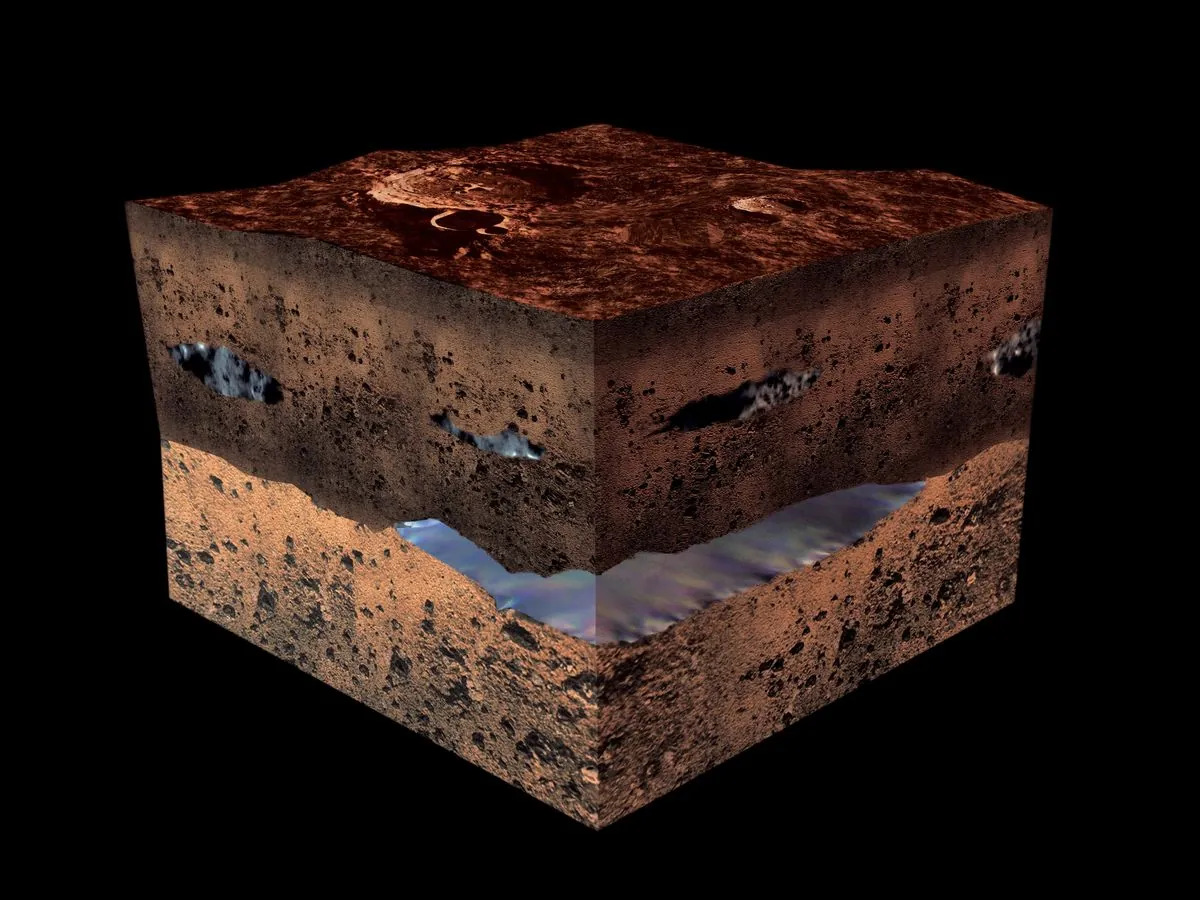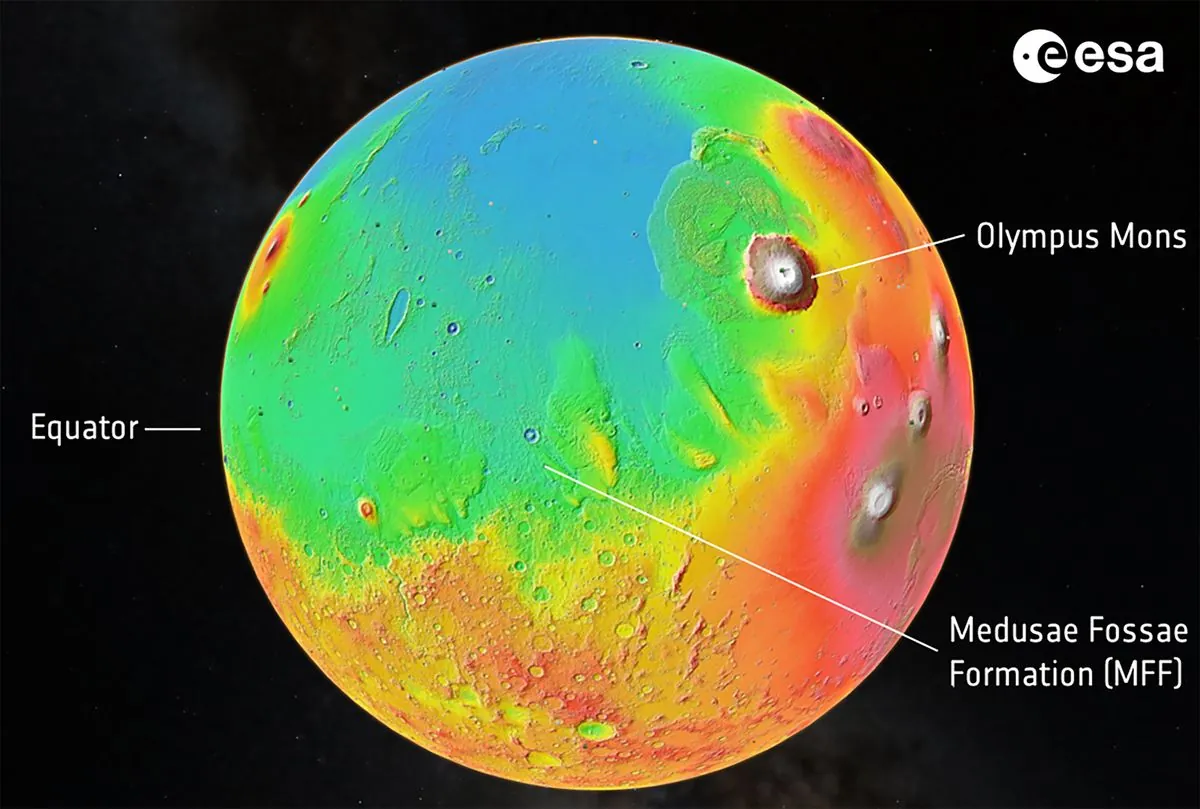Mars Harbors Vast Underground Water Reservoir, NASA Study Reveals
Scientists discover a massive liquid water reservoir deep beneath Mars' surface using NASA's InSight lander data. The finding suggests potential for microbial life and challenges for future exploration.

A groundbreaking study published on August 12, 2024, in the Proceedings of the National Academy of Sciences, reveals the existence of an enormous liquid water reservoir deep beneath the Martian surface. This discovery, based on data from NASA's InSight lander, could potentially reshape our understanding of the Red Planet and its capacity to support life.
The research team, led by Vashan Wright of the University of California, San Diego's Scripps Institution of Oceanography, analyzed seismic data collected by the InSight mission, which concluded in 2022 after four years of operation. Their findings suggest that a substantial amount of liquid water may be present within fractured igneous rocks, located approximately 11.5 to 20 kilometers below the Martian surface.
Michael Manga, a planetary scientist from the University of California, Berkeley and co-author of the study, explained that at these depths, the Martian crust is sufficiently warm to maintain water in its liquid state. This environment could potentially harbor microbial life, drawing parallels to similar conditions found on Earth where microorganisms thrive in deep, water-saturated rocks.
The research team combined seismic wave speed measurements, gravity data, and rock physics models to reach their conclusions. Wright stated that if the water from the mid-crust fractures were extracted, it could potentially cover the entire Martian surface with an ocean 1-2 kilometers deep.

This discovery provides new insights into Mars' geological history. The planet, once warm and wet over 3 billion years ago, underwent significant changes that transformed it into the cold, desolate world we observe today. The study suggests that much of the water that once flowed on the Martian surface may have filtered down into the crust rather than escaping into space.
"Early Mars had liquid water on its surface in rivers, lakes and possibly oceans. The crust on Mars could also have been full of water from very early in its history, too."
While this finding is exciting for the scientific community, it also presents challenges for future human exploration of Mars. The depth of the water reservoir makes it difficult to access, and any attempts to utilize this resource would need to address environmental protection concerns.
It's worth noting that Mars, despite its current inhospitable conditions, shares some similarities with Earth. The Red Planet experiences seasons due to its axial tilt of about 25 degrees, similar to Earth's. However, its average temperature is a frigid -63°C, significantly colder than our home planet.
Mars continues to captivate scientists and space enthusiasts alike. With its massive features like Olympus Mons, the largest volcano in the solar system, and Valles Marineris, a canyon system stretching 4,000 kilometers, the planet offers a unique landscape for future exploration.
As we continue to unravel the mysteries of Mars, this latest discovery of a potential vast water reservoir adds another layer to our understanding of the planet's complex history and its potential to support life, either in the past or possibly in the present.


































